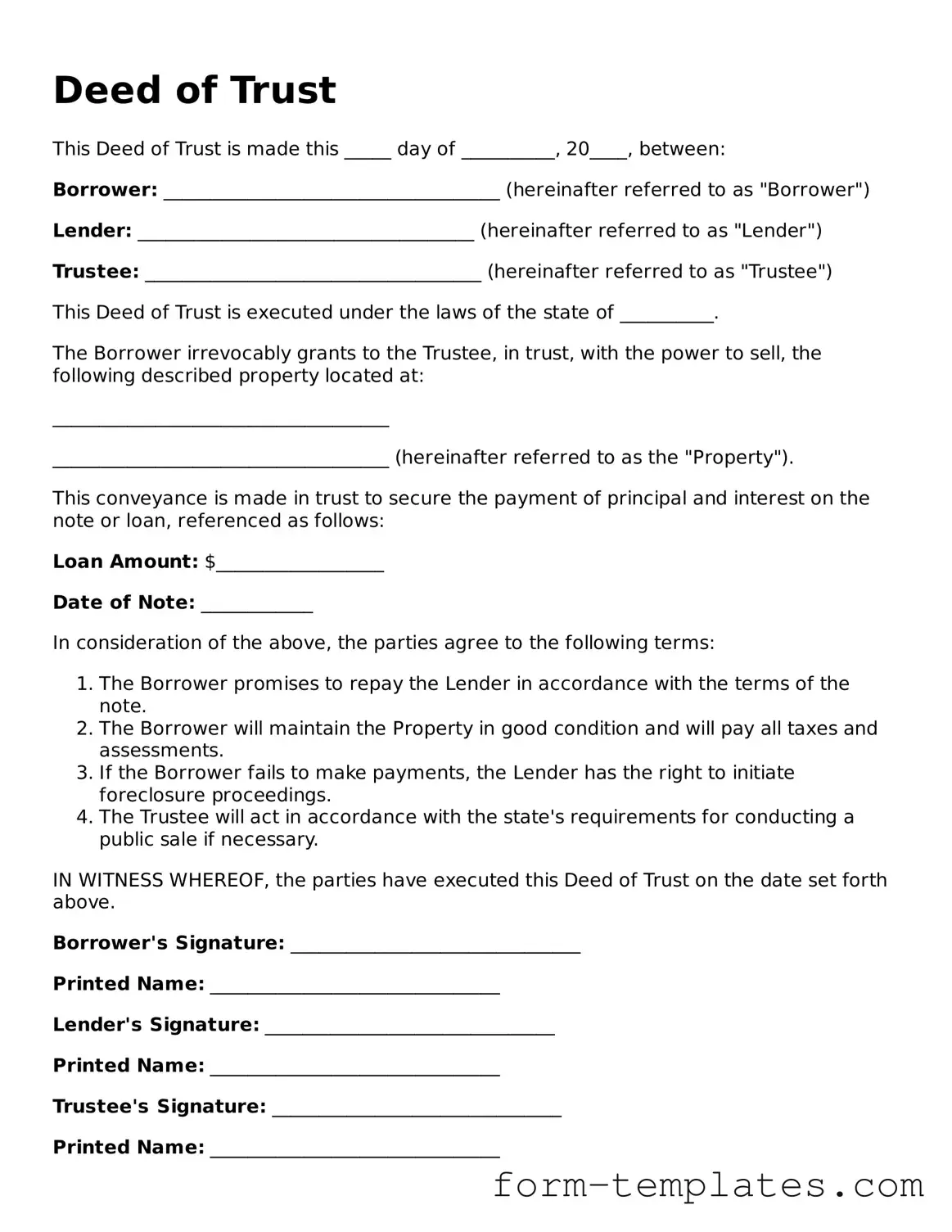Deed of Trust
This Deed of Trust is made this _____ day of __________, 20____, between:
Borrower: ____________________________________ (hereinafter referred to as "Borrower")
Lender: ____________________________________ (hereinafter referred to as "Lender")
Trustee: ____________________________________ (hereinafter referred to as "Trustee")
This Deed of Trust is executed under the laws of the state of __________.
The Borrower irrevocably grants to the Trustee, in trust, with the power to sell, the following described property located at:
____________________________________
____________________________________ (hereinafter referred to as the "Property").
This conveyance is made in trust to secure the payment of principal and interest on the note or loan, referenced as follows:
Loan Amount: $__________________
Date of Note: ____________
In consideration of the above, the parties agree to the following terms:
- The Borrower promises to repay the Lender in accordance with the terms of the note.
- The Borrower will maintain the Property in good condition and will pay all taxes and assessments.
- If the Borrower fails to make payments, the Lender has the right to initiate foreclosure proceedings.
- The Trustee will act in accordance with the state's requirements for conducting a public sale if necessary.
IN WITNESS WHEREOF, the parties have executed this Deed of Trust on the date set forth above.
Borrower's Signature: _______________________________
Printed Name: _______________________________
Lender's Signature: _______________________________
Printed Name: _______________________________
Trustee's Signature: _______________________________
Printed Name: _______________________________
STATE OF __________
COUNTY OF ______________
Subscribed and sworn to before me this _____ day of __________, 20____.
Notary Public: _______________________________
My Commission Expires: ______________________
